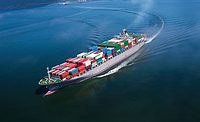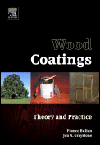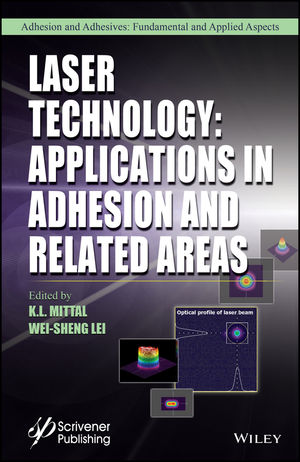The application potential and benefits of selective brush plating for industrial applications
“Why take the surface to the tank when you can take the tank to the surface?” is the idea on which the portable, selective brush plating process is based. Applying engineered surface coatings can provide a wealth of benefits including protection against corrosion and wear. However, with many surface finishing options available, including thermal spray processes, IVD, PVD, tank plating and selective brush plating, choosing the right one for a particular application can be a complex task. So when should you choose selective plating? Derek Vanek of SIFCO Applied Surface Concepts (ASC), part of Norman Hay plc and the supplier of selective plating technology and solutions, discusses the application benefits and possibilities of selective plating.
There are many benefits to choosing selective plating, including the ability to accurately focus the plating onto specific areas of a component, enabling parts to be plated in-situ, helping to minimize downtime and production delays.
Selective plating is best suited for localized areas on simple shapes such as inside and outside diameters or flat surfaces. In contrast to tank plating, the SIFCO Process® does not require extensive masking or special fixtures to plate the component. The length of time a plating operation will take is primarially determined by the amount of material that needs to be applied. SIFCO Process deposits can be plated at rates that are 30 to 60 times faster than conventional tank plating.
The performance and cost differences that these factors can make to maintaining, enhancing or repairing critical components can be significant, hence why it is important to consider all of the variables involved before deciding which surface finishing process to specify.
While damage from wear, corrosion or mis-machining can be repaired using selective brush plating, the SIFCO Process should not just be considered for repair or salvage. The full range of pure metal and alloy deposits available with the process offer enhanced wear resistance, increased surface hardness, low electrical contact resistance or corrosion protection for OEM component applications.
A Typical Operation
The SIFCO Process was founded more than 50 years ago, and was initially used for industrial repair applications, with early acceptance by the US Navy. Over the years, the process was developed to service a wide range of industrial repair and manufacturing applications.
The range of metals used in selective plating is extensive. The process is used to apply any metals that are traditionally carried out by tank electroplating, the most common being nickel, copper, cobalt, nickel-tungsten, cobalt chromium carbide, silver, gold and platinum.
There are several preparatory steps in which a work area is prepared to receive an adherant deposit. The appropriate preparatory procedure is determined by both the substrate of the component and the plating solution to be applied.
The process can be carried out manually, it can be mechanized, or it can be automated for high-volume applications. The thickness of the plating is accurately controlled through use of an ampere-hour meter, and once the required ampere hours are reached, plating is stopped and finished with a final water rinse and dry.
Aerospace, oil and gas, and power generation are all industries that are highly demanding when it comes to surface finishing performance requirements. So how is the process used within these industries?
Oil and Gas
The oil and gas industry is one that is highly demanding of material performance, operating in hostile, challenging environments where the cost of component failure can be extremely high. The SIFCO Process is well proven and extensively utilized within this industry in a wide range of applications, from OEM component manufacture to provide enhanced wear or corrosion resistance, to repair, where the process portability is important in reducing expensive downtime. Let’s look at some specific application examples.
One common application is silver plating onto dynamic sealing and bearing surfaces in drill bit components for lubricity. Another common application is the use of selectively plated copper, which is applied onto premium threaded connections, alloy premium drill pipe, risers, tubulars and couplings in order to prevent galling during make-and-break operations.
For oil- and gas-producing operations, there is no escaping the challenge of corrosion due to the harsh environment deep in the ocean. The properties of AeroNikl make it an extremely popular material to be selectively plated with high-chloride in down-hole applications. Additionally, surfaces that are mechanically damaged are often plated with a combination of copper and AeroNikl.
An example of an in-situ repair is whenSIFCO ASC repaired critical damage – caused by a lightning strike – to a crown mounted compensator (CMC) on an oil rig in the Gulf of Mexico. The CMC is responsible for applying constant tension to the drill string and to compensate for any rig movement. The significant gouge on the cylinder caused by the lightning strike would cause severe leakage at the cylinder seals, threatening production and the loss of thousands of dollars for each hour of downtime.
Using SIFCO ASC’s AeroNikl® 7280 for corrosion protection and Cobalt 2043 to cap the repair for hardness and to protect against surface wear, the CMC was back in full operation within 24 hours – as opposed to the three months it would have taken to replace the shaft.
Aerospace
The aerospace industry is renowned for its robust standards for the manufacture and repair of its high-performance equipment. Components need to be able to withstand friction, extreme, temperatures and corrosive environments while continuing to operate at optimum levels. The aerospace industry was one of the first to adopt the SIFCO Process for repair touch-ups to restore metal components that had been damaged by wear or corrosion. The process of selective plating is a widely accepted and approved method used to apply engineered deposits for both OEM and repair applications. A good example is the Federal Aviation Administration’s Advisory Circular 43.13-1B, which contains methods, techniqiues and practices (including Selective Plating) acceptable for the inspection and repair of non-pressurized areas of civil aircraft when there are no manufacturer repair or maintenance instructions. Selective plating is also approved worldwide by most major airlines, landing gear and engine manufacturers, and is written in to their overhaul manuals and standard practices.
Common uses of the SIFCO Process include the application of Cadmium LHE® and Zinc-Nickel LHE® for corrosion protection on structural components, as well as the application of AeroNikl, which is used for prebraze applications in engine components. We offer a variety of nickel and nickel-alloy deposits with characteristics suitable for the range of conditions within the aerospace industry.
Power Generation
Components operating in the power-generation industry are subject to intense environments and can be subject to heat, pressure, corrosion, wear, galling and friction. Selective plating offers a wide range of engineered deposits to enhance localized surfaces on OEM components and to repair equipment operating in these harsh conditions.
Selective plating presents an efficient and cost-effective process that enables repair and maintenance work to be carried out on site without the use of an immersion tank. The mobility of selective plating enables large parts and components to be repaired in-situ, without the disruption and logistical challenges of having to remove and ship large and often expensive parts to a purpose-built facility. The SIFCO Process presents a sustainable solution for the repair and maintenance of parts versus alternative methods
With the combination ofspecially designed, portable machining equipment and plating technology, SIFCO ASC can repair damaged bearing journals and slip rings while in situ, eliminating the major delays associated with full disassembly and shipping. In one such case, we repaired the slip rings on a wind turbine. The repair required plating three layers of copper, each approximately 0.015” thick, to resize the worn diameters. And then, after machining the plated copper deposit, we plated a 0.005″ thick layer of silver to improve conductivity.
Automating the Process for High Volume
Selective plating is a precise and effective method for the enhancement of localized surfaces on OEM components and can be mechanized or fully automated to meet the demands of high-volume plating applications.
We recently developed a semi-automated workstation for Powell Electrical Systems Inc., a division of Delta/Unibus, which reduced the processing time to selectively plate non-cyanide silver onto each side of its copper bus bars by 90 percent.
Its portability and versatility has allowed the SIFCO Process to be employed in some of most challenging locations and applications around the world including submarines, space stations, hydro-electric power stations, nuclear power plants, oil rigs in remote locations and on critical aircraft components.
Selective brush plating has dramatically evolved from its origins of touching up existing plating jobs, and is now considered an overarching term describing a highly technical process used for repairing or improving the surface properties in an array of circumstances. It is specified in the initial engineering design as well as being called out for component repair.
The various advantages provided by the SIFCO Process, combined with the wide range of engineered deposits, make it an attractive choice for OEM and repair applications. Whatever the requirements or size of a job, selective plating should always be considered a viable alternative to other methods of metal deposition.
For more information on the SIFCO Process visit www.sifcoasc.com.









Report Abusive Comment